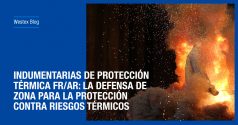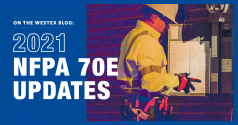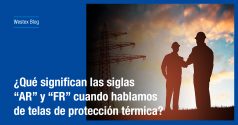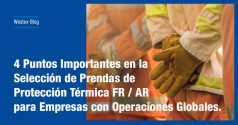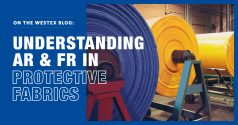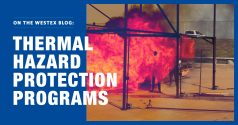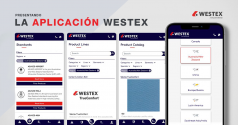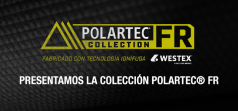Aprenda a proteger mejor a su fuerza laboral con la prenda ignífuga adecuada para cada región.
La pandemia mundial ha traído muchas cosas que la población en general no había visto anteriormente, incluido un mayor interés y comprensión del equipo de protección personal (EPP). El escenario del EPP ha sido parte integral de los programas de seguridad laboral durante décadas para los profesionales responsables de equipar a su fuerza laboral en actividades que involucran riesgos. Pero el hecho de que sepa que los EPPs van mucho más allá de las mascarillas no facilita el proceso de selección. Agregue a eso las complejidades de una fuerza laboral de diferentes países y tendrá una tarea aún más desafiante por delante.
A continuación se presentan cuatro puntos a considerar que creemos ayudarán mucho en esta tarea, permitiendo a los responsables de la selección de prendas ignífugas una forma más segura de proteger a su fuerza laboral global.
1. Comience con una buena evaluación de riesgos
El primer punto que hay que recordar al asumir la responsabilidad de garantizar seguridad a equipos de diferentes países cuenten con una prenda de protección térmica FR / AR adecuada es darse cuenta de que no aplica el concepto de una talla o tela sirve para todos. La consideración de reglas y leyes específicas para cada región es el primer paso en esta dirección. Puede comenzar pidiendo a sus organizaciones locales de salud y seguridad que le orienten sobre cómo implementar una evaluación de riesgos en sus operaciones.
Luego de realizar evaluaciones de riesgo con un enfoque local, puede ahorrar tiempo al contar con un proveedor de telas con experiencia en implementación en varios países, contribuyendo a su proceso de selección de prendas para cada región. Los proveedores locales, como los fabricantes de prendas, ayudarán en la personalización y la personalización final para una total adherencia a su programa.
2. Solicite ayuda
Es fácil confundirse con una sopa de siglas: ASTM, NFPA, IEC, IRAM, ABNT, NMX, entre otras. Pero, ¿cuál es la mejor manera de entender claramente lo que significa cada acrónimo? Haga preguntas, muchas preguntas. Un proveedor global como Westex puede explicar el papel de cada cuerpo de normas y legislación involucrado en este proceso. Nuestro equipo está listo para ayudarlo a comprender qué telas abordarán los diversos riesgos que enfrentará su fuerza laboral y el estándar de protección adecuado para cada región.
Nuestro equipo está capacitado para orientar a las empresas en los estándares específicos que deben cumplir y, además, para agregar información como cuál será la mejor tecnología textil para el tipo de clima al que estará sujeta su fuerza laboral.
3. Piense en el proceso como un todo
El EPP ideal está diseñado para que lo use el trabajador. Por lo tanto, si bien el análisis de riesgos y los estándares de seguridad son esenciales para la toma de decisiones, también es importante comenzar su proceso pensando en cada factor que enfrentará su fuerza laboral.
Tomemos el clima, por ejemplo. Es posible que una prenda que funcione bien en climas más fríos no sea cómoda en climas más cálidos. Pregúntese: ¿en qué se diferencian las tareas que se llevan a cabo en las diferentes regiones? ¿A qué factores ambientales estarán sujetos los trabajadores de cada región? ¿Un lugar requiere una prenda más liviana que le permita al trabajador moverse adecuadamente?
Al asignar tiempo para auditar los factores principales en cada región, tendrá elementos para construir un mejor programa de prenda ignífuga, un componente clave para mantener seguros a sus empleados.
4. Agilizar el proceso
Al elegir un proveedor global como Westex, tendrá acceso a gerentes que trabajan en varias regiones, asegurando un contacto personal que traerá más visibilidad a los requisitos de cada región. Además, los avances digitales han facilitado el contacto con nuestros equipos globales.
Al diseñar un programa global de prendas ignífugas, recuerde que este proceso es más como un maratón y no como una carrera de 100 metros. La planificación de este proceso mediante la evaluación de los diversos escenarios en los que su equipo está trabajando para estructurar un estudio cuidadoso de las diferentes reglas y condiciones puede ahorrarle tiempo, recursos y potencialmente crear una mejor relación costo-beneficio a largo plazo.
Artículo escrito por Paul Castelli, director de ventas internacionales y adaptado por Maria Chies, gerente de mercado para América Latina. Ambos de Westex: Milliken Brand.

